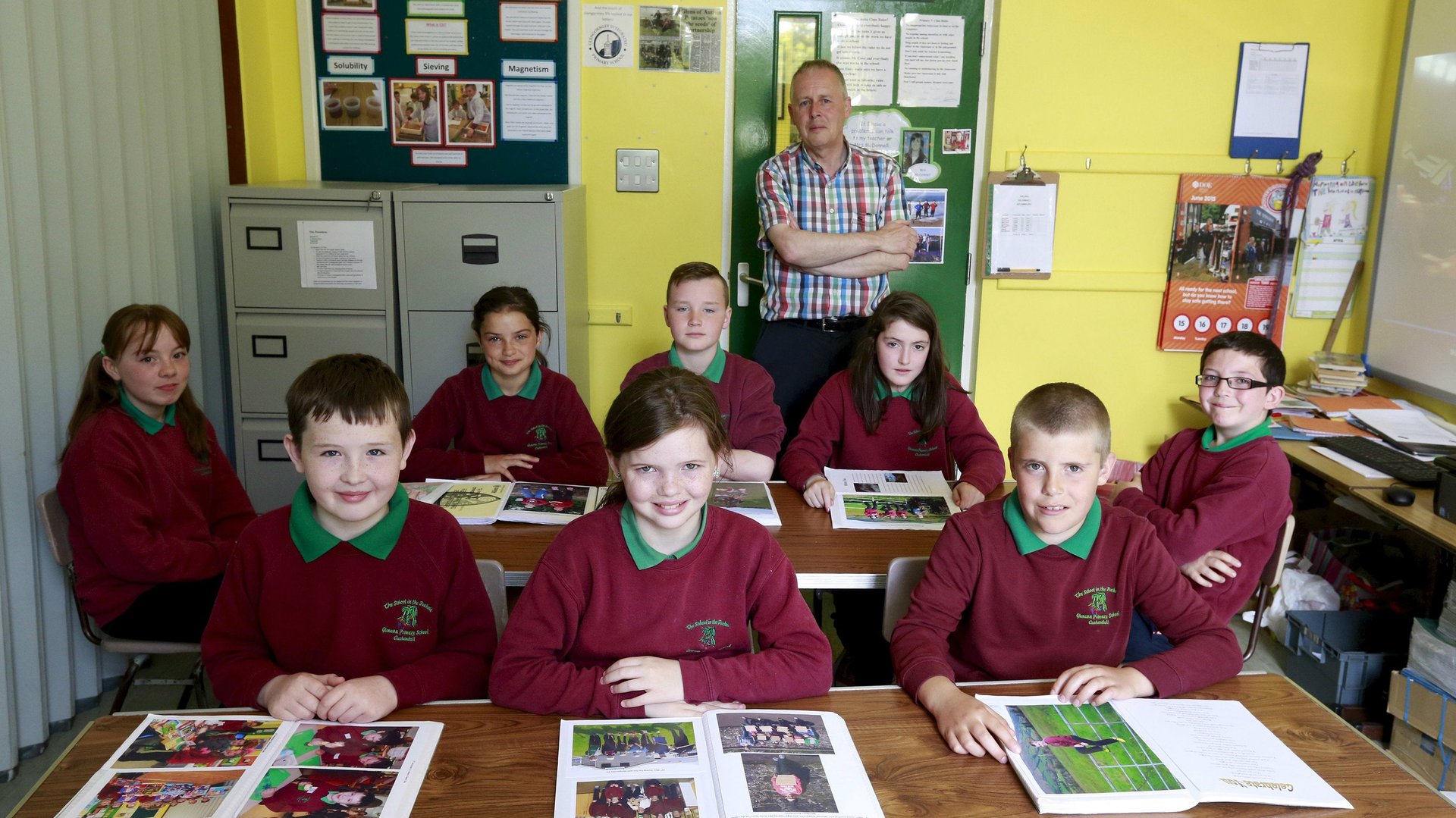We’re asking kids all the wrong questions in school
Research, and common sense, show that kids learn more by being actively engaged in what they’re doing. When they engage in discussion, teach others, and grapple with a math problem, they boost their ability to absorb and retain information.


Research, and common sense, show that kids learn more by being actively engaged in what they’re doing. When they engage in discussion, teach others, and grapple with a math problem, they boost their ability to absorb and retain information.
The evidence is mounting against schools that fail to take this approach. Most are still built around making sure kids have the right answers to rote questions, rather than the tools to formulate meaningful questions that deepen their learning.
In a randomized controlled trial of nearly 2,500 nine and 10 year-olds in the UK, students who were taught the skill of reason—how to formulate questions and thoughtfully explain an argument—performed better on assessments of math, science, and English than kids who had not been exposed to this kind of skill-building.
The 20-week trial, carried out by the Education Endowment Foundation in Britain, found that kids in classes where teachers were trained to teach these methods made, on average, two months more progress in English and science than a control group of kids who did not receive the intervention. In addition to those gains, it also boosted math scores by a month for the most disadvantaged kids.
The results add to research showing that metacognition skills–which help kids monitor and evaluate their own learning—help them perform better in subjects like math and english. Of all the learning interventions tested by the EEF, metacognition strategies are the most promising, with overall gains of up to eight months of learning, or nearly one additional year of schooling.
“Getting children to think and talk about their own learning more explicitly can be one of the most effective ways to improve academic outcomes,” said Kevan Collins CEO of the Education Endowment Foundation.
Beyond the test mindset
The program, called dialogic teaching, is based on the idea that discussion prompts thought, which helps to embed learning. Robin Alexander of University of Cambridge who developed it, explained that “in dialogic classrooms, students don’t just provide brief factual answers to ‘test’ or ‘recall’ questions, or offer the answer which they think the teacher wants to hear.” Instead they learn to narrate, explain, analyze, speculate, imagine, explore, evaluate, argue, and justify. They learn to ask questions of their own. In another approach, called recitation, instructors convey information to kids and then use short question/answer sequences to recall or test what students are expected to know. While that has its place, it should not be the default, nor the only method used, he argues.
“Teachers have to move away from ‘what’ questions to questions beginning with ‘why’, ‘how’, ’what’, and ’if’, such as ‘what do you think would happen if…’,” he said.
This builds on evidence (pdf) that discussion requiring higher cognitive power—i.e. the kind that prompts kids to think —accelerates learning and understanding, and in turn boosts test scores. In one study, 9- and 10-year old children who were taught philosophy once a week significantly boosted their math and literacy skills over the course of one year, with disadvantaged students showing the most significant gains. In another program, British primary school kids asked big questions about science, like ‘how do we know the earth is a sphere’, made three month’s more progress in science compared to a control group.
Schools aren’t typically well designed for this higher learning. Large classes, behavioral problems, differing motivation levels, and the pressures of standardized testing stand in the way of dialog-based classrooms.
Recitation often persists because asking closed questions allows teachers to “maintain total control over the direction of travel in the lesson,” Alexander says. If teachers are less confident in their content knowledge, or this is the way they were taught, it can be hard to deviate.
The experiment
For the trial, teachers of 2,492 9- and 10-year-olds and a teacher mentor in 38 schools were trained in the method. The teachers then used the method in their classrooms for 20 weeks over two terms. Students were then tested in English, math, and science and compared roughly the same number of students in 38 control schools.
While many teachers said the program elevated dialogue and improved student confidence, others noted difficulties. One noted that new curriculum, new assessment procedures, and new standards meant that “the quality of dialogue hasn’t necessarily been the priority.” Another added, “If you’ve only got 40 minutes in your maths lesson, you’re not going to spend 20 minutes doing a beautiful little dialogic discussion.”
Beyond elite schools
Private schools tend to excel at this type of teaching. At Phillips Exeter, an elite US boarding school, teaching and learning are built around a method called “Harkness”, which involves sitting students at an oval table, and having them take ownership of class discussion with each other. Teachers mostly act as background facilitators.
Edward Harkness, an heir to the Standard Oil fortune who developed the method in 1930, emphasized small class sizes and the oval table so there would be “no corners to hide behind.” According to Business Insider, 139 independent schools, 70 public schools, and 16 countries sent representatives to Exeter to learn about it in the 2014-2015 school year.
Alexander says if governments started training teachers from less advantaged schools in the method, there would be an economic payoff. Employers, after all, increasingly need critical thinkers.